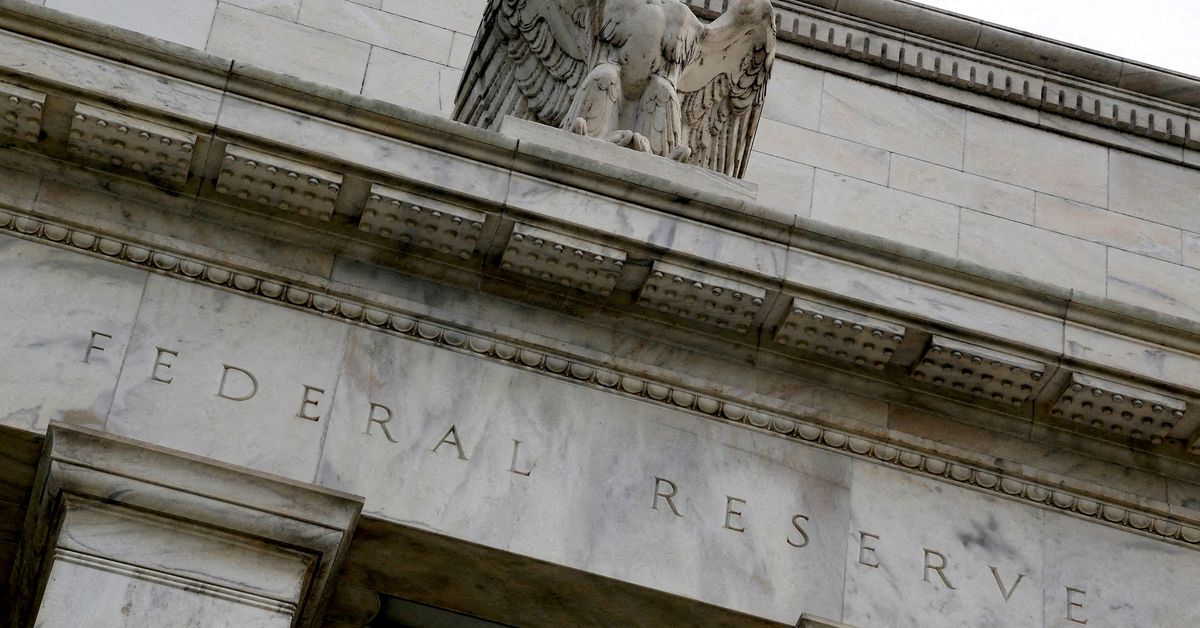In 2022 inflation data trumped Fed comments for moving markets, report says

NEW YORK, Jan 18 (Reuters) – Last year, the inflation data that forced the Federal Reserve to embark on a historically aggressive path of rate rises was a bigger mover of markets than any central bank action or comment from a core policymaker, a new report from Evercore ISI said.
“Fed speak in 2022 could really best be described as inflation speak with the [consumer price index] releases over the course of the year driving by far the largest absolute change” in two-year Treasury note yields relative to any other type of policy event they studied for last year, Peter Williams, Krishna Guha and Gang Lyu wrote in a research release on Sunday.
The found that the average CPI release last year had twice the average impact on the short-term Treasury note relative to the average Federal Open Market Committee statement, for example.
In terms of market moves, “the sheer volatility around each CPI release is remarkable” and reflects the magnitude of inflation surprises last year and how those unexpected readings changed the outlook for Fed policy, they wrote.
Last year was the year the Fed got caught flatfooted by the highest levels of inflation seen in 40 years. Central bankers had initially brushed the surge of price pressures off as a temporary factor tied to the onset of the coronavirus pandemic but ultimately found themselves behind the curve. They then embarked on a very aggressive campaign of rate rises that lifted the central bank’s rate target from near zero levels in March to between 4.25% and 4.5% by the close of 2022. Rates will almost certainly go up further this year even as inflation pressures are showing some initial signs of cooling.
In the report, the authors found that FOMC statements and the press conferences that followed the meetings impacted short-dated Treasuries and the stock market in different ways. The statement announcing Fed policy actions hit bonds hardest, while the press conference, which exists for the Fed leader to more fully explain what the central bank did, had a greater impact on moving the S&P 500.
Meanwhile, the Fed meeting minutes, which describe the proceedings of FOMC meetings and come three weeks after each gathering, also had a market impact, and were often received as more dovish compared to FOMC meetings and press conference.
“We suspect that this is because nuance, and the greater range of forecasts and opinions the Minutes permit, tended to allow for more dovish interpretations than the more limited and focused perspective of the Statement and Press Conference,” the report said.
Among policymakers, the report found that remarks by Fed Chair Jerome Powell, Vice-Chair Lael Brainard and New York Fed leader John Williams had notable market impacts. Christopher Waller, the former St. Louis Fed research director who became a Fed governor in late 2020, and who was a very vocal proponent of aggressive rate rises, was also a market mover.
The report did not rank the market impact of the 11 remaining regional Fed leaders, who speak with much greater frequency than Board members and even the New York Fed leader. Regional Fed leaders often show a larger range of views about economic and monetary policy issues, and some central bank watchers have lamented the frequency of their comments as muddling the message core Fed officials are trying to advance.
The Evercore ISI economists reckon market drivers will shift in the new year.
“With inflation having peaked and the fed funds rate now into restrictive territory, markets’ perceptions around policy volatility and the marginal impact of new data releases seems likely to fall or at least reorient more towards growth concerns and away from inflation,” they wrote.
Reporting by Michael S. Derby; Editing by Andrea Ricci
Our Standards: The Thomson Reuters Trust Principles.






